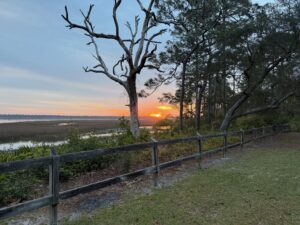
First up was the antennas.
Ryan (AF4O), Jeff (NE4C), Jason (N4BOZ), Tom (WX4TOM) and Tom (NY4I) arrived and began setting up several antennas and equipment. Our primary rig was an Elecraft K4, complemented by a bit of extra power from an Elecraft KPA500. If we could have figured out a way to power a KPA1500 from the stove, we would have certainly given it a shot—but we needed the stove for cooking!
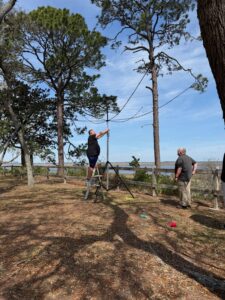
Ryan AF4O working on the Hex beam while Jeff NE4C looks on [Photo by NY4I]
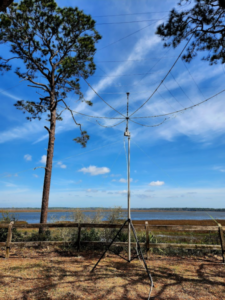
Ryan and Jason immediately got to work setting up a wire antenna to get us on the air, while Tom (NY4I) prepared the K4 and amplifier. We also had a CW paddle and FT8 capability, allowing us to make contacts in those modes as well as SSB. The cabin we used for our setup was shared with two non-hams for sleeping, making CW and FT8 ideal for late-night and early-morning sessions when others were asleep. However, the highlight of our operation was the Hex Beam, where we focused on calling CQ POTA via SSB.
On the Air
Each day was a blend of radio operation during the day and Risk tournament games in the evenings following by socializing around the campfire at night; which left us with limited time for evening operating. The daily sessions leading up to the WPX contest resulted in constant pile-ups, with everyone eager to work US-2170. While most parks operate with a maximum of 100 watts to wire antennas, our setup with 500 watts to the Hex Beam gave us a significant advantage, ensuring we had a strong signal.
The following chart shows all the different places we contacted:
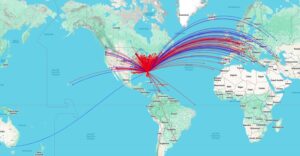
Results
Here is a break down from the POTA.APP website on each operator (NE4C, AF4O and NY4I) all using the callsign NE4C:
Jeff (NE4C) is a master of SSB contacts, effortlessly racking up QSO after QSO. On Thursday, March 27, he made an impressive 390 contacts, followed by 227 on Friday, 115 on Saturday, and 12 on Sunday (all times are in UTC, so anything after 8:00 PM on Saturday technically counts as Sunday). A great feature of POTA logging is that under a single callsign, both the main call and the operator receive credit. When we enter “OPON” in our logging software (TR4W, of course), both the operator and the station callsign (NE4C in this case) are credited. You can also see the CW contacts made by NY4I on March 27, along with the late-night data contacts.
Incidentally, KQ4WTG listed in the table above was not in our group. He is a frequent activator of Crooked River State Park. We never heard him on the air.
The following are some more pictures of our trip.
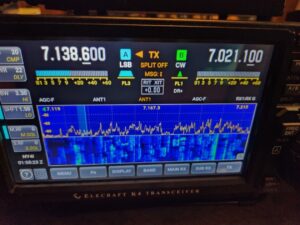
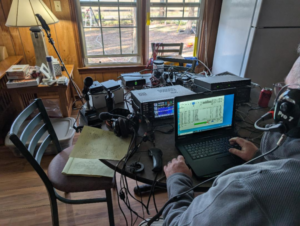
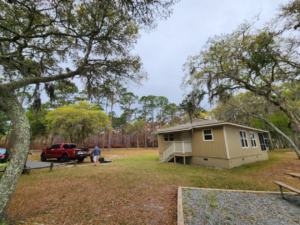
We also had time to enjoy the area. On Friday morning, we took a trip out to Folkston, Georgia to visit the Folkston Train Viewing Platform to watch trains.

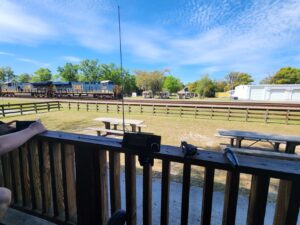
Wrap-Up
This trip was a blast! We packed a wide range of activities into just a few short days. A big thank you to all the POTA hunters who worked with us, as well as to the stations we contacted during the WPX contest. Special thanks to Ryan (AF4O) for bringing all the antennas and the amplifier, and to everyone who helped with the setup. Jason (N4BOZ) and Tom (WX4TOM) didn’t even operate but helped setup! While we can’t make any guarantees for next year—especially considering the pesky bugs this time of year—we’re considering a simpler setup, like an antenna on a truck mount or just a pole along a fence. Regardless of what we decide, one thing is certain: it will be a fun experience!
